In 2024, mastering carb cycling for optimal muscle gain involves strategic alternation of high and low carb days. This method enhances muscle growth, improves insulin sensitivity, boosts workout performance, and increases energy levels effectively. By alternating carbohydrate intake, you can optimize your body’s ability to build muscle efficiently. This technique is not only beneficial for muscle gain but also plays a crucial role in enhancing fat loss and overall body composition. Give your muscles the fuel they need to grow and perform at their best with carb cycling.
Key Takeaways
- Structured schedule aligns high carb days with intense workouts.
- Optimize muscle growth with proper carb and protein timing.
- Consider glycemic index for choosing appropriate carb sources.
- Adjust carb intake based on activity levels for optimal results.
- Focus on consistency, adherence, and meal prep for success.
Benefits of Carb Cycling
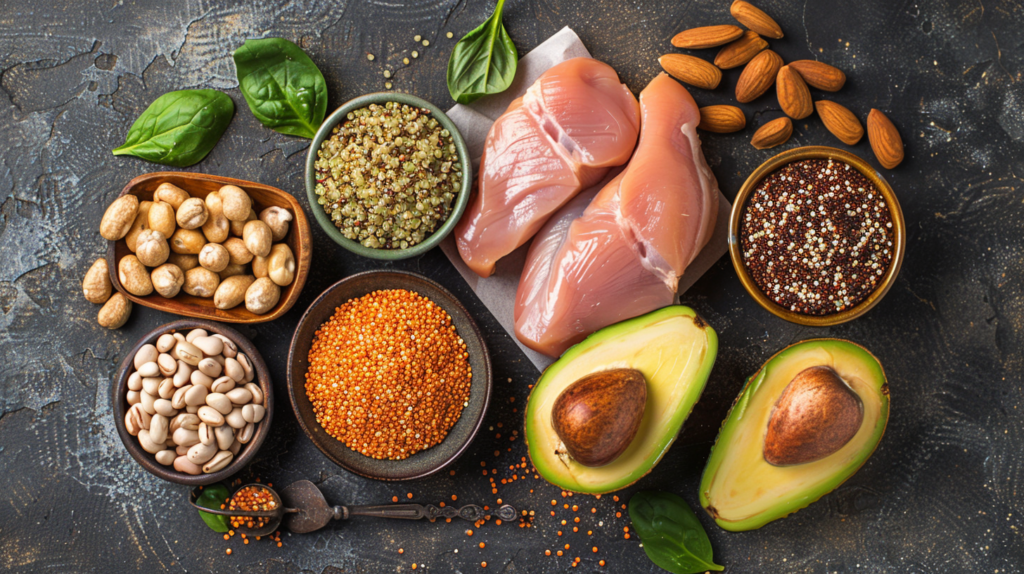
We’ve found that incorporating carb cycling into our nutrition plan can lead to various benefits, including improved muscle gain, enhanced fat loss, and optimized performance during workouts.
One significant advantage is the increased energy levels that come with carb cycling. By strategically alternating between high and low carbohydrate days, our bodies are better equipped to handle the demands of intense exercise, providing us with the necessary fuel to power through workouts.
Additionally, carb cycling can improve insulin sensitivity, a crucial factor in managing blood sugar levels and enhancing nutrient uptake by the muscles. This improved insulin sensitivity not only supports better overall health but also aids in better nutrient partitioning.
This means that the macronutrients we consume are more efficiently utilized by the body, leading to enhanced muscle recovery and growth.
How Carb Cycling Works

Understanding the mechanics of carb cycling involves strategically alternating between high and low carbohydrate intake to optimize energy levels and enhance muscle growth. By adjusting carb timing, individuals can capitalize on the metabolic effects of carbohydrate intake on insulin response and energy levels.
When consuming high-carb meals, insulin levels rise, promoting muscle glycogen replenishment and nutrient uptake, crucial for muscle recovery and growth. On the other hand, low-carb days help improve insulin sensitivity, allowing the body to efficiently utilize stored fat for energy, aiding in fat loss while preserving muscle mass.
Balancing high and low carbohydrate intake throughout the week can prevent metabolic adaptation, where the body adjusts to a consistent carb intake, potentially hindering progress. This fluctuation challenges the body to adapt, optimizing its response to carbohydrates and maximizing muscle gains.
Moreover, strategically manipulating carbohydrate intake can help regulate hunger hormones, improve energy levels, and enhance overall performance during workouts, ultimately leading to better muscle-building outcomes.
Setting Your Carb Cycling Schedule

To effectively implement carb cycling, creating a structured schedule that alternates between high and low carbohydrate days is key for optimizing muscle gain and fat loss.
When setting your carb cycling schedule, consider both carb cycling timing and frequency. The timing of your high carb days should align with intense workout sessions to fuel performance and aid in muscle recovery. On the other hand, low carb days can be strategically placed on rest days or lighter training days to promote fat burning while maintaining muscle mass.
Consistency is crucial when it comes to carb cycling. Aim to follow your schedule consistently to see optimal carb cycling results. By sticking to a routine that includes both high and low carbohydrate days, you can effectively manipulate your body’s fuel sources to support muscle growth and fat loss.
Experiment with different schedules to find what works best for you, but remember that adherence and consistency are key. By staying disciplined with your carb cycling plan, you can achieve your muscle gain and fat loss goals efficiently.
Choosing the Right Carbs
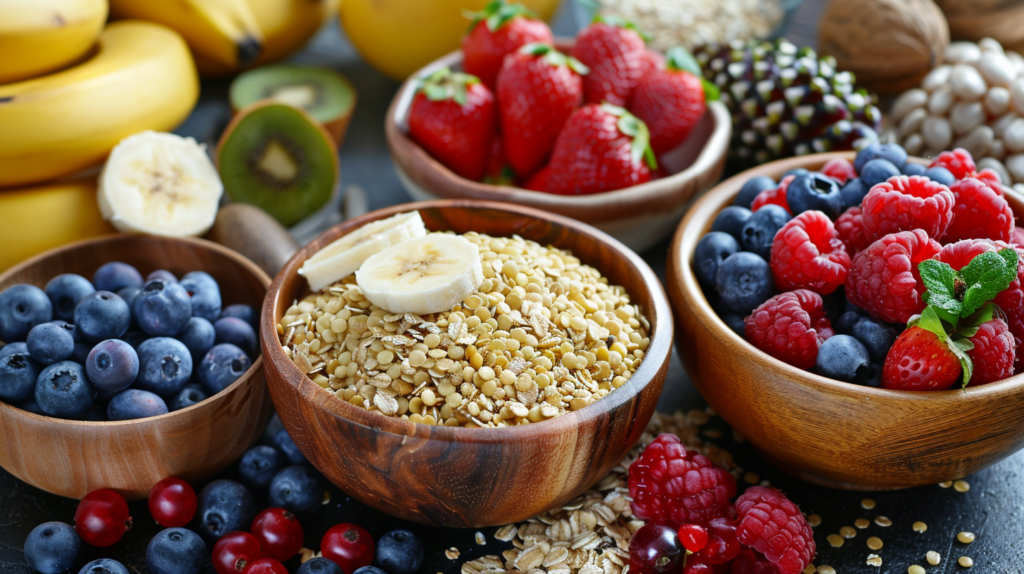
Selecting the appropriate carbohydrate sources is essential when implementing a carb cycling strategy for optimizing muscle gain and fat loss. Carbohydrate sources vary in their glycemic index, which measures how quickly they raise blood sugar levels. This is crucial for timing your carb intake effectively throughout the carb cycling phases.
High glycemic index carbs like white bread or sugary cereals can be beneficial post-workout to replenish glycogen stores quickly. On the other hand, low glycemic index carbs such as sweet potatoes or quinoa are ideal for providing sustained energy and keeping blood sugar levels stable during the day.
When considering portion sizes, it’s important to tailor your carbohydrate intake to your activity level and goals. On high-intensity workout days, you may need more carbs to fuel your training sessions and aid in recovery. Conversely, on rest days or low-intensity workout days, reducing your carbohydrate intake can help manage overall calorie consumption.
Adjusting Macros for Muscle Gain
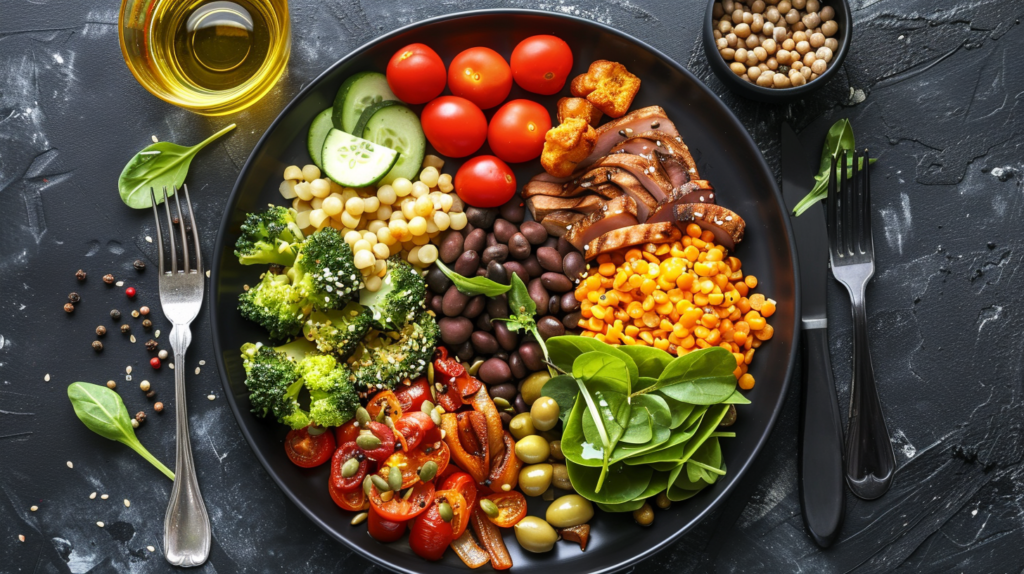
Optimizing macronutrient ratios is crucial for achieving muscle gain goals through carb cycling. When aiming to build muscle, a key component is ensuring an adequate protein intake. Protein provides the essential amino acids necessary for muscle repair and growth. For muscle gain, aim for around 1.2 to 2.2 grams of protein per kilogram of body weight per day, distributed evenly throughout your meals.
In addition to protein intake, timing meals strategically can also enhance muscle growth. Consuming protein-rich meals or snacks before and after workouts can support muscle protein synthesis and recovery.
Pre-workout meals should include protein and carbohydrates to fuel your training session, while post-workout meals are crucial for replenishing glycogen stores and kickstarting muscle repair.
Carb Cycling and Workouts
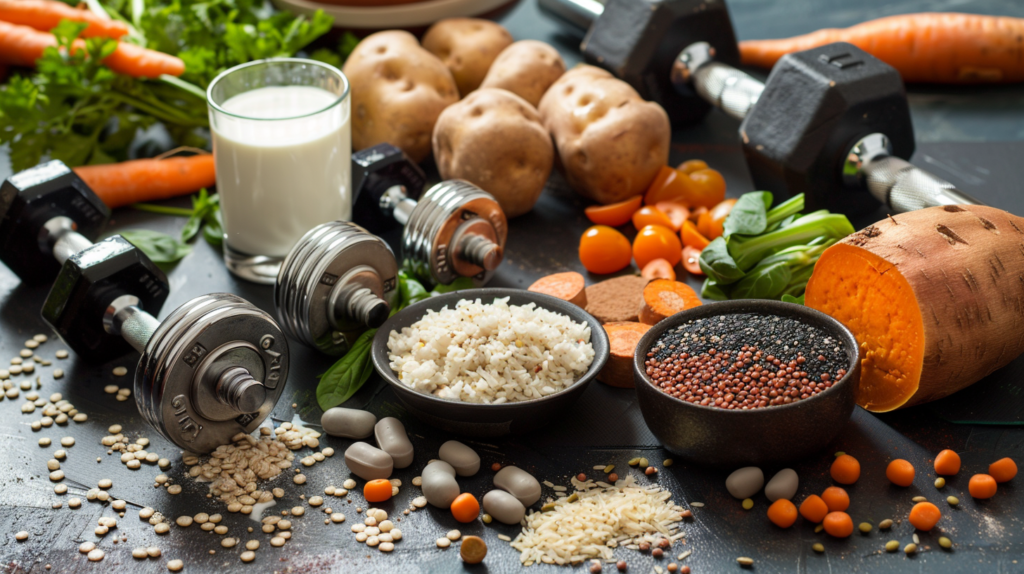
Implementing carb cycling alongside our workouts can significantly impact muscle gain progress and overall performance.
When it comes to endurance, strategically timing high-carb days before intense cardio sessions or endurance workouts can provide a much-needed energy boost. The influx of carbohydrates during these sessions can fuel our muscles, allowing us to push harder and longer, ultimately improving our endurance capacity.
Furthermore, carb cycling plays a crucial role in post-workout recovery. On high-carb days following intense resistance training, our muscles replenish glycogen stores more effectively, aiding in muscle repair and growth. This enhanced recovery process can reduce muscle soreness and fatigue, allowing us to bounce back quicker and be ready for the next training session sooner.
Tracking Progress and Adjustments
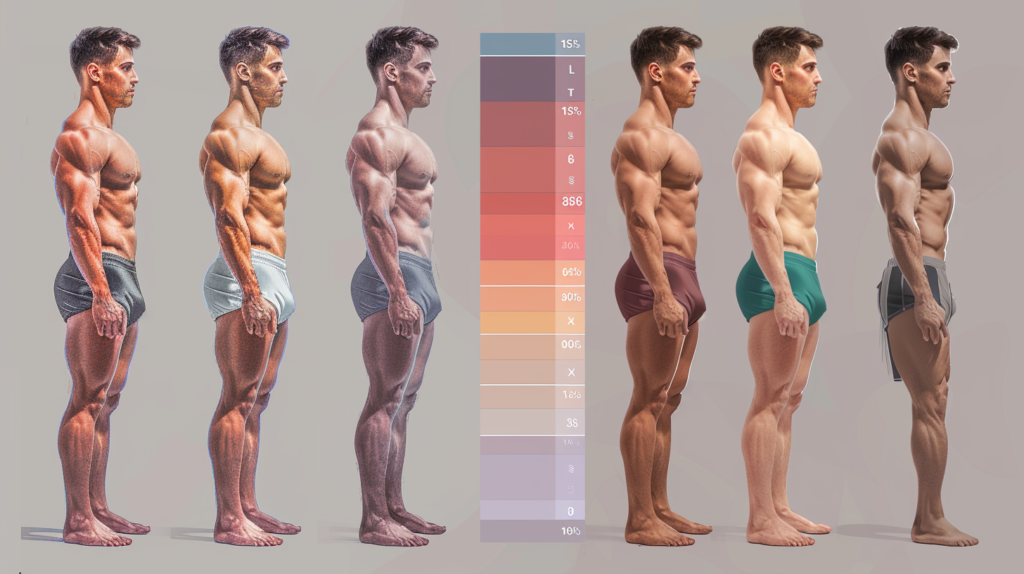
Tracking our progress and making necessary adjustments is essential when incorporating carb cycling into our muscle gain regimen for optimal results. By closely monitoring progress and being willing to make macro adjustments as needed, we can fine-tune our carb cycling approach to maximize muscle growth and performance. Below is a helpful table to guide you on how to track your progress and when to make macro adjustments:
| Progress Tracking | Signs of Progress | Signs of Plateauing | Macro Adjustments Needed |
| Strength Gains | Increased weights | Stalled progress | Adjust carb intake |
| Body Composition | Decreased body fat | No change in physique | Modify high/low carb days |
| Energy Levels | Sustained energy | Fatigue during workouts | Increase or decrease carb intake |
| Performance Metrics | Improved endurance | Decreased performance | Adjust carb timing |
Common Mistakes to Avoid

Let’s highlight some common mistakes to avoid when incorporating carb cycling into your muscle gain journey for optimal results.
Firstly, overlooking the importance of nutrition timing can hinder your progress. It’s crucial to align your carbohydrate intake with your workout schedule to maximize energy levels and muscle recovery.
Secondly, failing to adjust your carb intake based on workout intensity can impede your gains. Higher intensity workouts may require more carbs for fuel, while lower intensity days may benefit from fewer carbs to prevent excess calorie intake.
Recovery is another key aspect to consider. Not prioritizing adequate rest and recovery can lead to muscle fatigue and hinder your overall progress. Ensure you’re getting enough sleep and allowing your muscles time to repair and grow.
Additionally, neglecting the role of supplementation in supporting your carb cycling plan can be a mistake. Supplements can help fill any nutrient gaps in your diet and optimize your muscle-building potential.
Sample Carb Cycling Meal Plan

When structuring a sample carb cycling meal plan, consider the strategic distribution of carbohydrates throughout your week to optimize muscle growth and performance. Meal prep and timing play crucial roles in ensuring you meet your macronutrient distribution and portion sizes effectively. Here’s a simple sample plan to get you started:
| Day | Meal 1 | Meal 2 | Meal 3 | Meal 4 |
| Monday | High Carb | Moderate Carb | Low Carb | Moderate Carb |
| Tuesday | Low Carb | High Carb | Moderate Carb | Low Carb |
| Wednesday | Moderate Carb | Low Carb | High Carb | Moderate Carb |
| Thursday | Moderate Carb | Moderate Carb | Low Carb | High Carb |
| Friday | Low Carb | Moderate Carb | Moderate Carb | High Carb |
Frequently Asked Questions
Can Carb Cycling Help With Weight Loss as Well as Muscle Gain?
Carb cycling can be effective for weight loss by managing insulin levels and optimizing fat burning. It can also support muscle gain by providing energy for workouts and promoting muscle recovery. It’s a versatile strategy for both goals.
Is It Okay to Drink Alcohol While Carb Cycling?
Absolutely, we can enjoy alcohol while carb cycling, but moderation is key. Choosing lower-carb options like vodka or tequila can align with our goals of muscle gain or weight loss. Balancing indulgence with discipline is crucial.
How Long Does It Take to See Results From Carb Cycling?
When tracking progress with carb cycling, results vary. Typically, changes can be noticed within a few weeks, but full benefits may take 4-8 weeks. Adjusting macros based on how the body responds is key to optimizing results.
Can I Still Follow a Vegetarian or Vegan Diet While Carb Cycling?
Yes, you can absolutely follow a vegetarian or vegan diet while carb cycling. Plant-based options like tofu, tempeh, legumes, and quinoa offer excellent protein sources. Meal planning and recipe ideas can ensure you meet your nutritional needs effectively.
Are Cheat Days Allowed During a Carb Cycling Regimen?
Yes, incorporating cheat days strategically can be beneficial when carb cycling. By strategically timing cheat meals, we can maintain adherence to the plan while potentially boosting metabolism and satisfying cravings, minimizing negative impacts on progress.
Conclusion
In conclusion, mastering carb cycling is the key to unlocking massive muscle gain potential in 2024. By strategically alternating high and low carb days, choosing the right types of carbs, and adjusting your macros accordingly, you can optimize your muscle-building efforts like never before.
Don’t miss out on this game-changing approach to nutrition and training – start carb cycling today and watch your gains skyrocket!













